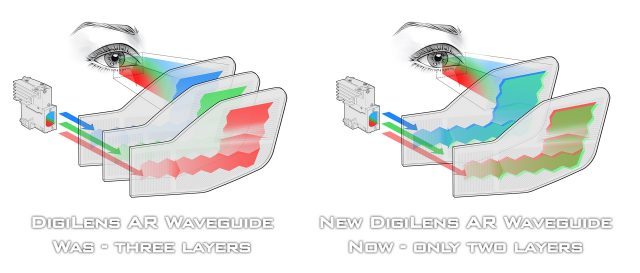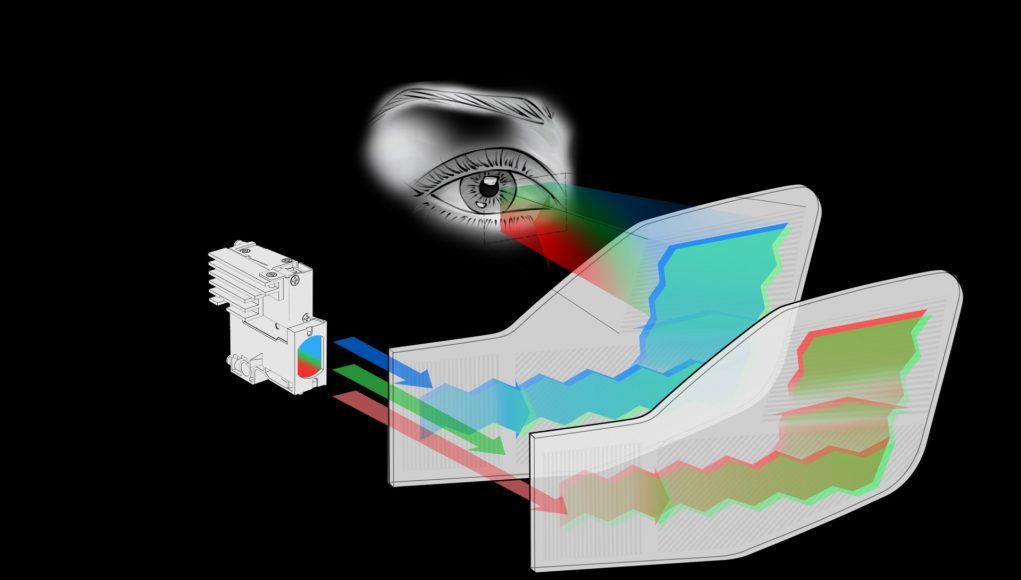DigiLens, a developer of transparent waveguide display technology, says it’s working toward a waveguide display which could bring a 150 degree field of view to AR and VR (or XR) headsets. The company expects the display will be available in 2019.
Founded in 2005, DigiLens has developed a proprietary waveguide manufacturing process which allows the company to “print” light manipulating structures (Bragg gratings) into a thin and transparent material wherein light can be guided along the optic and be made to project perpendicularly, forming an image in the user’s eye. While DigiLens isn’t the only company which makes waveguide displays, they claim that their process offers a steep cost advantage compared to competitors. The company says they’ve raised $35 million between its Series A and B investment rounds.

While DigiLens’ displays have primarily been used in HUD-like applications, the company is increasingly positioning its wares toward the growing wearable, AR, and VR industries. At AWE 2018 last week, DigiLens Founder & CTO Jonathan Waldern told me that the company expects to offer a waveguide display suitable for AR and VR headsets which could offer a 150 degree field of view between both eyes. He said that a single display could be suitable for AR and VR modes in the same headset by utilizing a liquid crystal blackout layer which can switch between transparent and opaque, something which DigiLens partner Panasonic has developed. A clip-on light blocker or other type of tinting film ought to be suitable as well.
Key to achieving such a wide field of view will be condensing the display down to a single grating, Waldern said. Until recently the company’s displays used three gratings (one each for red, green, and blue colors), but DigiLens recently announced that their latest displays can use just two gratings by splitting the green channel between the red and blue layers.

As waveguides are limited by the refractive index of the optical material, moving all colors into a single grating will allow multiple gratings to instead be used to transmit multiple slices of the image along each layer and then be aligned during projection, offering a wider field of view than a single grating could support.
While DigiLens plans to make this wide field of view waveguide display available in 2019, it will take longer until we’re likely to see it in a commercially available headset, since it will be up to another company to decide to build a headset using the display. And while DigiLens doesn’t make headsets themselves, it’s likely that it will develop a reference headset as it has done for its other displays.

With its current dual-grating display, DigiLens has partnered with smart helmet company Sena to offer its MonoHUD display (25 degree diagonal FOV) as a HUD for motorcyclists. That product will soon launch priced at $400, which DigiLens says has been made possible by a new “inkjet coating manufacturing process,” which brings improved visual quality and “significantly less cost,” so there’s hope that their wide FOV display could reach consumer price points as well.

The company is also presently developing a reference headset for what they call EyeHUD, a mono display in a glasses-like form factor that’s designed as a smartphone companion device.







